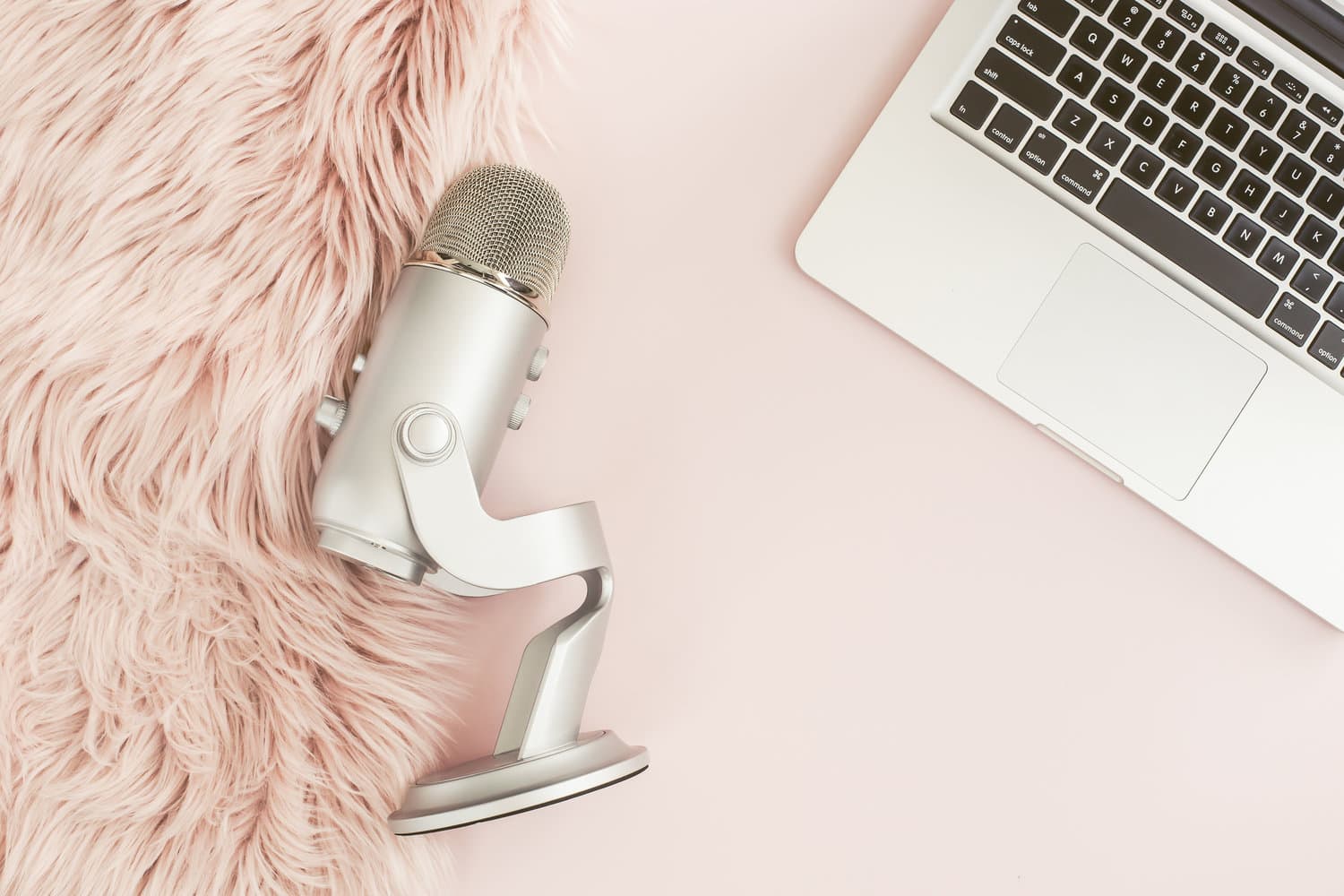
By Nikayla Ricketts, Social Media Executive at Eskenzi PR

When it comes to creating a successful podcast, it takes more than using a basic audio recorder and uploading it to SoundCloud. It requires strategic planning, quality equipment, engaging speakers, superior recording and editing software, appropriate space and knowledge of the best platforms to host your podcast. All of these requirements can be quite daunting when you start a podcast, but if you can get them right then you’ll quickly get your listeners. So, without further ado let’s get into the do’s and don’ts of creating the prefect podcast:
1. Room Setup
DON’T:Use a room that has glass walls and tables, wooden floors, hard unfurnished surfaces, in fact, the emptier the room feels, the worse it is for recording podcasts. If there is no soft furnishings the sound waves from your voice will bounce around the room creating echoes within the space. If you’re outside avoid noisy areas, crowded places, aircraft noises, or recording on a windy day, all these can have a lasting effect on your podcast.
DO: Get some sound soundproofing foam panels or if you don’t want to spend all that money, blankets and pillows will do just as good. Ensure to cover as many corners and walls in the room as possible. The idea is to stop vocal waves from bouncing off the wall and into your microphone. All this will prevent your room sounding as if you are recording in a bathroom.
2. Equipment
DON’T: Use a basic device such as your phone to record audio, you will not have the best audio you could potentially achieve. Also, don’t think you can get away with basic earphones you use to listen to music on the way to and from work. You need to be able to hear the recorded audio without minor noises in the background. Hearing your true audio allows you to recognise mistakes before editing. I can recommend these: https://podcast.co/create/10-podcast-headphones. But if you have a pair of beats headphones lying around, they will be just fine.
DO: Invest in a good mixer. It can be used to eliminate minor sound problems, clean up tracks and any other problems that can commonly occur not to mention you can combine and modify sounds. You also need a laptopwith an audio editing software installed. Which can be easily connected to the mixer via USB port.
Probably one of the most important things to have are the right microphones. Do make sure you know how to use them to get the best sound. I recommend checking out this blog to get advice on the right microphones: https://www.searchenginejournal.com/mic-need-professional-podcast-10-best-podcasting-microphones/119254/
Do use microphone pop filters that help soften popping sounds when the speaker uses “p” words. Would you believe, they also protect the microphone from rogue saliva to give your mics a longer lifespan. ATTENTION! It is important to ensure that when setting up the filter that it is in perfect line with your microphone, I would say around a closed fist distance away is a good reference. If your speaker sits too far their voice sounds fainter as if they are speaking from a great distance which is not what we want.
3. Software
Don’t: Upload the audio straight to a hosting site. Also, don’t think you can get away without editing podcasts, there is always something you can tweak or add to make your recordings better from adding jingles to cutting out long pauses. There is always something that can be resolved.
Do:Have software that successfully captures your audio while recording your podcast. I personally use adobe audition. I love this software because not only does it capture audio it also allows you to edit and add other sounds to your track. It’s easy to use and doesn’t take long to become familiar with the user interface. If this is slightly out of budget, I would recommend “Audacity”, a free audio editor that is compatible with both Mac and Windows.
4. Being prepared
Don’t:‘Wing it’. If you go in totally unprepared without a topic in mind or what type of questions to ask you’re setting yourself up for disaster. Even the most experience of talkers need a heads up and rough idea on what the podcast will be about. Be prepared for a lot of awkward silence, long pauses, ummms, ahhhs and who knows what else. Don’t mention any dates or years as this will limit the listening shelf life of your podcasts.
Also, do not over plan and script every word. A listener can tell if you are reading from a script and this is not what we want. We want you to sound real and authentic like you’re having a conversation with the person next to you instead of sounding as if you are auditioning for your first play. Also, do not over talk each other, this is especially important if you only have one track for two or more audios. Editing will become tricky if one person makes a mistake when someone has made a valid point without sacrificing losing both at once.
Do:Create a short intro jingle to give your podcast some branding. Make sure it is not too long, and then create a script to introduce the interviewer and guests, plus a little bit about what the podcast will cover. Remember, you want your listeners to listen for as long as possible, so make sure it stimulates some interest to keep them engaged.
Do a practice run, no need to record, this is just to get everyone warmed up for the actual recording. Take turns when speaking and make sure it’s not just one dominant voice through the entire podcast. After a question is asked don’t immediately answer, give the listener a chance to come up with an answer of their own to make them feel a part of the podcast. Also, make sure you thank your quests and most importantly your listeners for their time and being part of your podcast.
5. Uploading, sharing and getting traffic to your podcasts
Don’t: Think you can just upload your podcast to a hosting site and get plays immediately. Firstly, you need to get people to notice your podcasts even exists. Also, remember not all social platforms allow you to upload the full audio. You need to get creative on how to share your podcasts on social media while giving your listeners a small taster to get them interested.
DO: Have an account on a podcast distribution website.This is primarily the home of your podcasts, where people can view your entire playlists. Also, make sure you have an Apple ID for your podcasts so you can submit them to the Apple Podcasts Connect panel. iTunes is the biggest source for people to listen to podcasts. You can also interlink it to other platforms such as SoundCloud. The process happens when an RSS feed is generated from the hosting site, in our case SoundCloud, which then links to iTunes. You can even get your hosting site linked to Spotify and even YouTube! In simpler terms when you upload your podcast to SoundCloud it will automatically appear on your iTunes account.
To help draw in more listeners to your podcasts include small soundbites. I usually include no more than 60 seconds of the podcast. The trick is to include a small part that makes the listener want more. It also helps tremendously if you have artwork to accompany the podcast with some branding to grab the attention of people scrolling through their social feeds. Don’t forget to include your call to action and point the, to your podcast hosting site!
- Embedded players and links:
Be sure to include links to your podcast in whatever you do. This could be including a button link in your email signature, a dedicated podcast page on the company’s website with an embedded player. It’s all about thinking strategically on how you can get more plays from sources outside your hosting site.
Now, if you can nail everything in this blog, you have the recipe for a successful podcast programme. But if you feel it is all too much, we can help you here at Eskenzi PR. Why not get in contact with us to find out how we can help you with recording the prefect podcast for your company.
Thanks for reading me blog, and we hope to hear from you soon.







